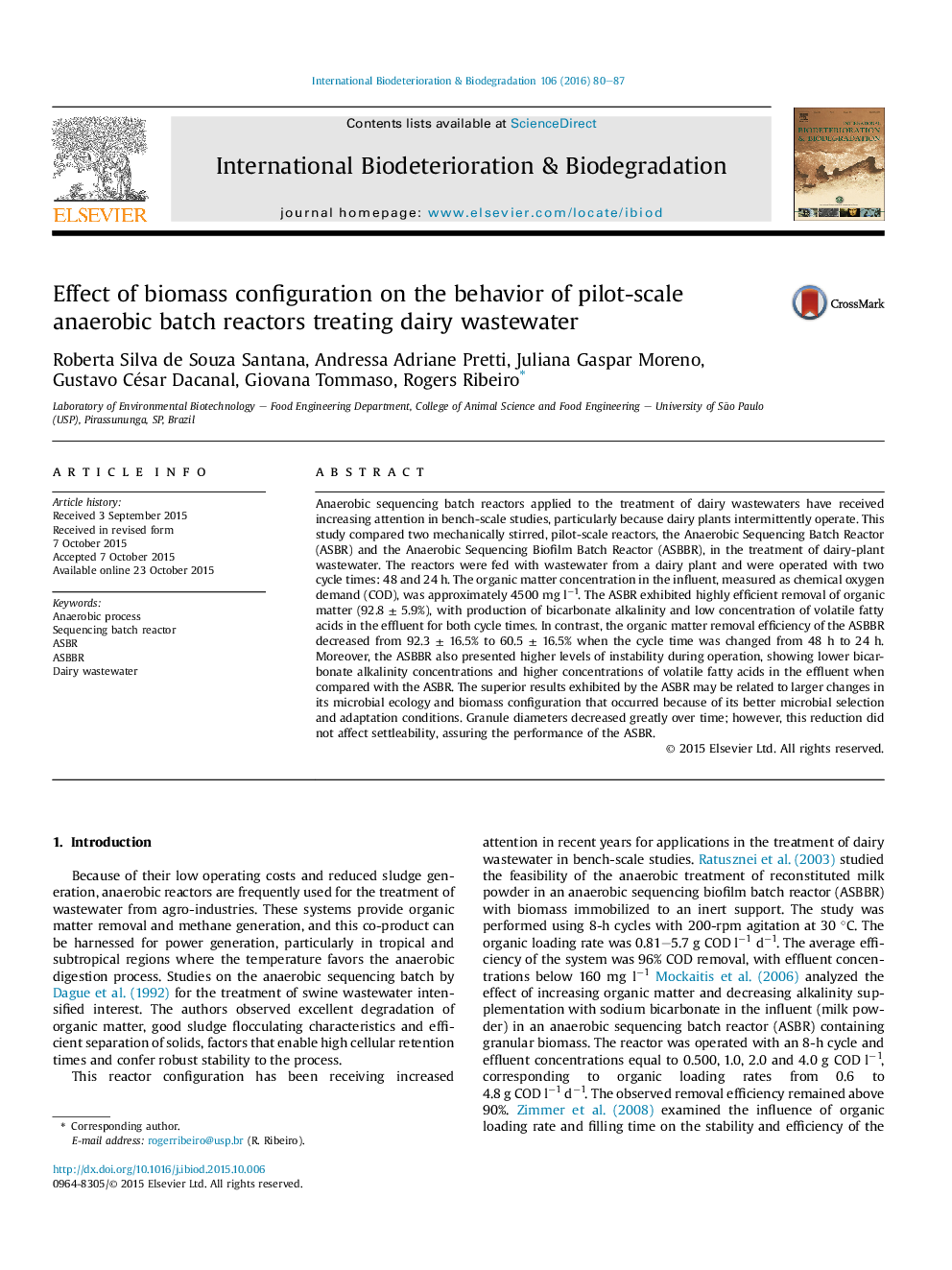| کد مقاله | کد نشریه | سال انتشار | مقاله انگلیسی | نسخه تمام متن |
|---|---|---|---|---|
| 4364289 | 1616311 | 2016 | 8 صفحه PDF | دانلود رایگان |
• Two different reactors configurations, regarding biomass retention, were tested.
• The effect of the cycle time was evaluated.
• Suspended biomass was more efficient, compared to attached consortiums.
• Granule diameters decreased throughout the operation.
• Molecular biology tests evidenced shifts in the anaerobic consortium.
Anaerobic sequencing batch reactors applied to the treatment of dairy wastewaters have received increasing attention in bench-scale studies, particularly because dairy plants intermittently operate. This study compared two mechanically stirred, pilot-scale reactors, the Anaerobic Sequencing Batch Reactor (ASBR) and the Anaerobic Sequencing Biofilm Batch Reactor (ASBBR), in the treatment of dairy-plant wastewater. The reactors were fed with wastewater from a dairy plant and were operated with two cycle times: 48 and 24 h. The organic matter concentration in the influent, measured as chemical oxygen demand (COD), was approximately 4500 mg l−1. The ASBR exhibited highly efficient removal of organic matter (92.8 ± 5.9%), with production of bicarbonate alkalinity and low concentration of volatile fatty acids in the effluent for both cycle times. In contrast, the organic matter removal efficiency of the ASBBR decreased from 92.3 ± 16.5% to 60.5 ± 16.5% when the cycle time was changed from 48 h to 24 h. Moreover, the ASBBR also presented higher levels of instability during operation, showing lower bicarbonate alkalinity concentrations and higher concentrations of volatile fatty acids in the effluent when compared with the ASBR. The superior results exhibited by the ASBR may be related to larger changes in its microbial ecology and biomass configuration that occurred because of its better microbial selection and adaptation conditions. Granule diameters decreased greatly over time; however, this reduction did not affect settleability, assuring the performance of the ASBR.
Journal: International Biodeterioration & Biodegradation - Volume 106, January 2016, Pages 80–87
